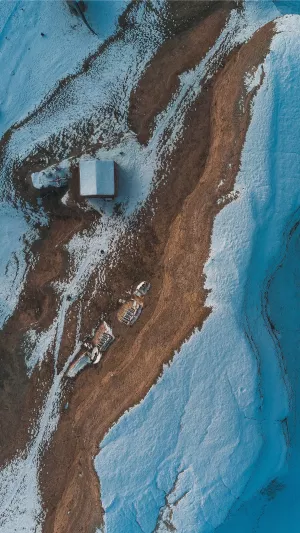When the temperature is low and the climate is moist, it is easy to produce snowfall. Because the ground temperature is generally below zero at this time, the temperature in the high-altitude cloud layer is lower.
Therefore, the water vapor originally in the cloud will directly condense into small ice crystals and small snowflakes in a low-temperature environment.
When the power of the air is not enough to hold them, these condensation products will fall from the clouds to the ground, and under the influence of the wind, they collide with each other in the air and finally form a snowflake.
Snowflakes have various shapes. Common is radiation-like, star-shaped, and so on. In addition, there are needle-like snowflakes. Various factors including temperature will affect the shape of snowflakes.
According to statistics, there are 35 snowflakes with different shapes in the world. You can find the most perfect snowflake at a temperature of -15 degrees Celsius.
The snowflakes are very light. Generally speaking, the diameter of a snowflake is less than 2 mm. 10,000 snowflakes are only 1 gram of weighing together, while 1 cubic meter of snow usually contains 6 billion to 8 billion snowflakes.
Snow has a clear chemical composition. According to the National Ice and Snow Data Center, minerals are "naturally existing homogeneous solids, inorganic formation, and have a clear chemical composition and orderly atomic arrangements." Frozen water or ice is natural, so snow belongs to minerals.
The color of an object is determined by the nature of its surface, and our eyes will also feel the existence of the object with the light reflected by the object. If the object can pass through the light, we call it transparent.
If all wavelengths of visible light can pass through an object, we call it transparent. The color of an object is white if its surface reflects all wavelengths of visible light. Snowflakes reflect light, and when snow falls over a large area, it reflects all the light, so we see snowflakes that are white.
However, due to environmental factors, snow will also show different colors. For example, red snow can be seen near glaciers. This is because there are bright red freshwater algae in the surrounding freshwater.
The thick snow may also appear blue. According to the National Ice and Snow Data Center, if you dig a hole in the snow and look at the hole, you may see blue. Normally, blue light is light with longer wavelengths that can pass through ice or snow. Only blue light can penetrate the super-deep gully and appear blue.
Sometimes, we feel that after the snow falls, the whole world seems to be quiet.
You may think this is related to human factors. Because people do not go out often when they are snowing, there is no hustle and bustle outside outdoors. However, this kind of quiet is also a scientific reason.
"In fact, snow will absorb some sound waves," said the meteorologist Plucky. Plucky said that when snowflakes accumulated, there would be a lot of gaps. When the sound encounters a loose and long structure such as snow, it will reflect multiple times in the gap to energy loss, which cannot continue to spread.





